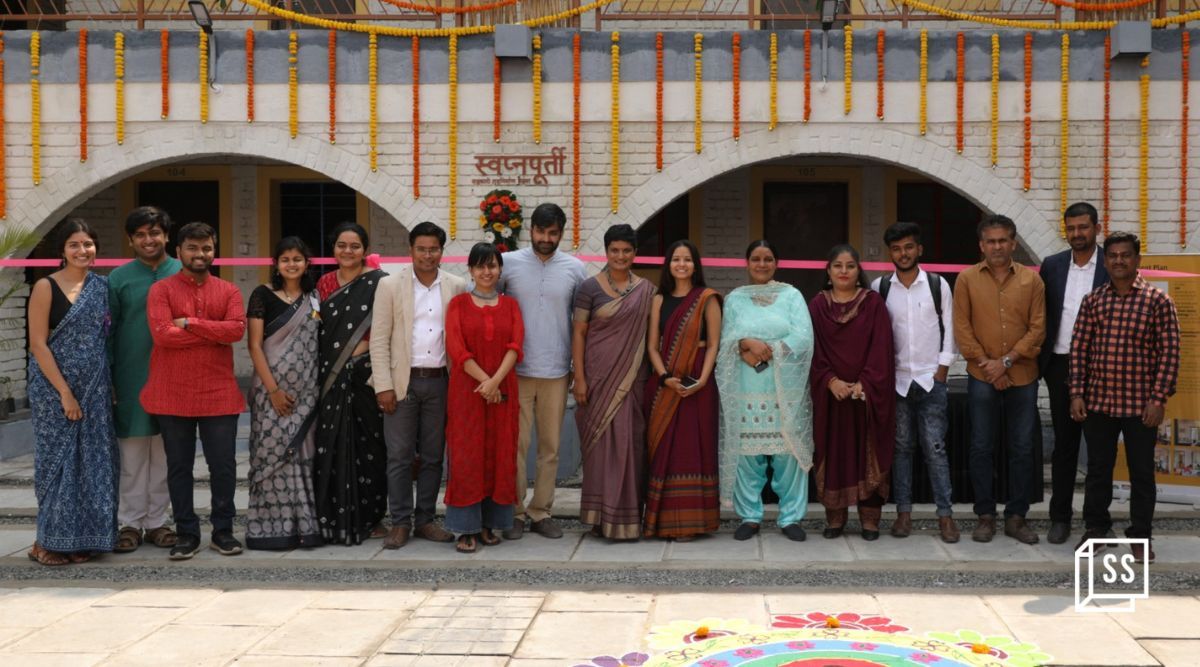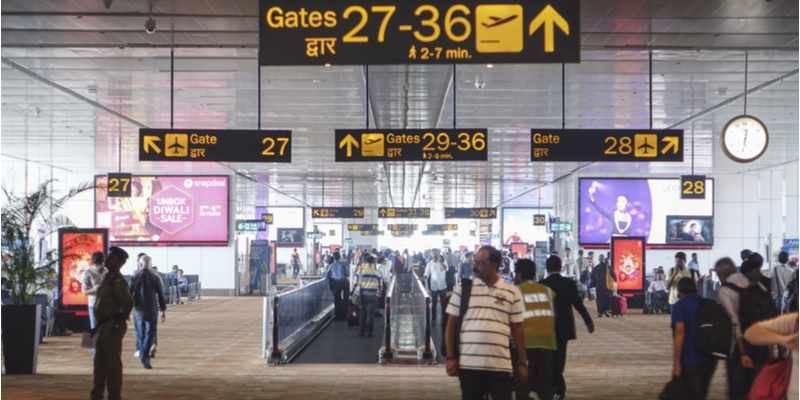This design agency is improving living conditions in slums by building dignified spaces
Community Design Agency works with marginalised communities and helps them design their own living environment according to their needs.
Key Takeaways
- Community Design Agency design studio works with marginalised communities and helps them design living quarters according to their needs.
- The agency has helped around 27,000 people across four projects.
- It has partnered with the Municipal Corporation of Greater Mumbai (BMC), Maharashtra Housing and Area Development Authority (MHADA), British Council, among others.
The narrow alleys of Natwar Parekh Colony in Mumbai reeked with the pungent smell of garbage littered in the passageways. The buildings, housing nearly 25,000 people, had narrow staircases and even tighter corridors.
The houses, not larger than 226 sq feet, had tiny windows peering into other homes, all huddled together three to four metres apart, leaving no room for sunlight and ventilation.
Within these cramped accommodations, people huddle together in groups of six to fifteen, going about their daily chores in stale and scruffy air.
Natwar Parekh Colony was established in 2007 to provide formal housing for slum and pavement dwellers in Mumbai but, like most slums, largely remained ignored.
Sandhya Naidu Janardhan, an architect and Founder of Community Design Agency, visited the colony in 2016 and decided to redesign the settlement to provide better living conditions to the dwellers.
Community Design Agency (CDA) design studio, also founded in 2016, works with marginalised communities and helps them design living quarters according to their needs. CDA is supported in its efforts by the Curry Stone Foundation (CSF), a US-based NGO launched in 2007 by architect Cliff Curry and archaeologist Delight Stone.
The first steps

Sandhya Naidu Janardhan
Janardhan remembers never settling in one place in her childhood as, due to financial constraints, her family kept changing houses.
“I remember all those homes based on how the morning light poured in and how well-ventilated they were. I became acutely aware of the impact that space can have on people when access to sunlight, ventilation, and safety is met. This led me to choose design and architecture as I obsessively dreamed of relocating windows, removing walls, and changing layouts to create well-lit, well-ventilated homes in safe neighbourhoods,” she tells SocialStory.
After studying architecture in Bengaluru, she moved to the US to pursue advanced architectural design at Columbia University. However, upon completing her course in 2008, the country was hit by a housing crisis and many architects lost their jobs.
Undeterred, she started working with Architecture for Humanity, a US-based NGO focused on social design. It was through this organisation that her journey in social design began.
After leading numerous social design projects in Kenya, Haiti, Singapore, and Cambodia, Janardhan returned to India in 2016. During her visit to the Natwar Parekh Colony (NPC), she was inspired to start her own organisation, with the NPC serving as its first rehabilitation project.
Rebuilding homes and lives
The CDA believes in giving equal stakeholdership to dwellers in the designing and construction process.
Upon receiving requests for slum rehabilitation, the team begins by conducting extensive conversations with the residents to comprehensively understand their needs and preferences.
“We ensure that their vision is incorporated into the final design plan so that the new houses are tailored to the community’s specific needs,” she says.
The agency has also worked with 120 street vendors in Natwar Parekh Colony to help them organise spatially by redesigning their carts to function within limited space. It has designed a library space where children can interact and learn together and also arranged for a collective waste separation system on each floor.

Natwar Parekh Colony in Mumbai
In February this year, the agency also arranged for the Govandi Arts Festival, wherein residents of various slums in Govandi came together to celebrate their spirit and creativity through performative and visual arts.
Once the agency started with the slum rehabilitation projects, there was no looking back for them. In 2018, CDA commenced the rehabilitation of the Sanjaynagar slum in Ahmednagar in close collaboration with Snehalaya, an NGO that provides support for women, children and LGBT communities, who have been affected by HIV and AIDS, trafficking, sexual violence, and poverty.
The slum was built on marshy land and lacked proper drainage infrastructure. The residents were forced to cohabitate in poor living conditions and had to wade through knee-length water to get to work.

The Sanjaynagar slum in Ahmednagar
However, new sewage and water purification systems have been installed to mitigate diseases and drainage problems. The newly built houses enjoy adequate ventilation and indoor plumbing, and the rooftops have edible gardens, providing access to fresh fruits and vegetables. The agency will also set up a community health centre that provides access to healthcare providers and seminars on health-related issues.
So far, the agency has handed over 33 houses in the project’s first phase, impacting 298 families.
Building safe and healthy workspaces
In 2018, the agency worked with 42 sex workers from Shevgaon in Maharashtra and helped them rebuild a safe workspace—Niramay Palace.
“Using chalk and thread, the women drew their ideal space layout directly onto the floor. Their design included access to water, sanitation facilities, art, and plants,” Janardhan says.
Another request was about a gathering area upstairs where the women could rest and unwind in private, without fear of authorities or the anticipation of customers.

Niramay Palace
In 2019, the agency and the E[co]work Association International (an organisation empowering micro-entrepreneurs in the informal waste sector) conceptualised and designed an industrial co-working space for the informal dismantling community of 50,000 people in North East Delhi. It hosted its first design workshop in March 2020 to explore various avenues to establish a formal workspace.
So far, the agency has helped around 27,000 people across four projects in Delhi, Mumbai, Ahmednagar, and Shevgaon.
For these projects, the agency partnered with the Municipal Corporation of Greater Mumbai (BMC), Maharashtra Housing and Area Development Authority (MHADA), British Council, Rang De (peer-to-peer lending platform regulated by RBI), Nirvana Design Studio, and Sofies India, among many other institutions.
Janardhan is leading a team of eight individuals to construct houses and communities for the impoverished.
She recognises that society often associates a person’s identity with the places they live in. Therefore, she views this project as an opportunity to not only upgrade the living conditions of the impoverished but also transform society’s perception of these areas and the people residing there.
“Everyone has the right to a dignified space, and we are empowering residents by making them equal stakeholders in creating a better living environment,” says Janardhan.
Edited by Kanishk Singh












